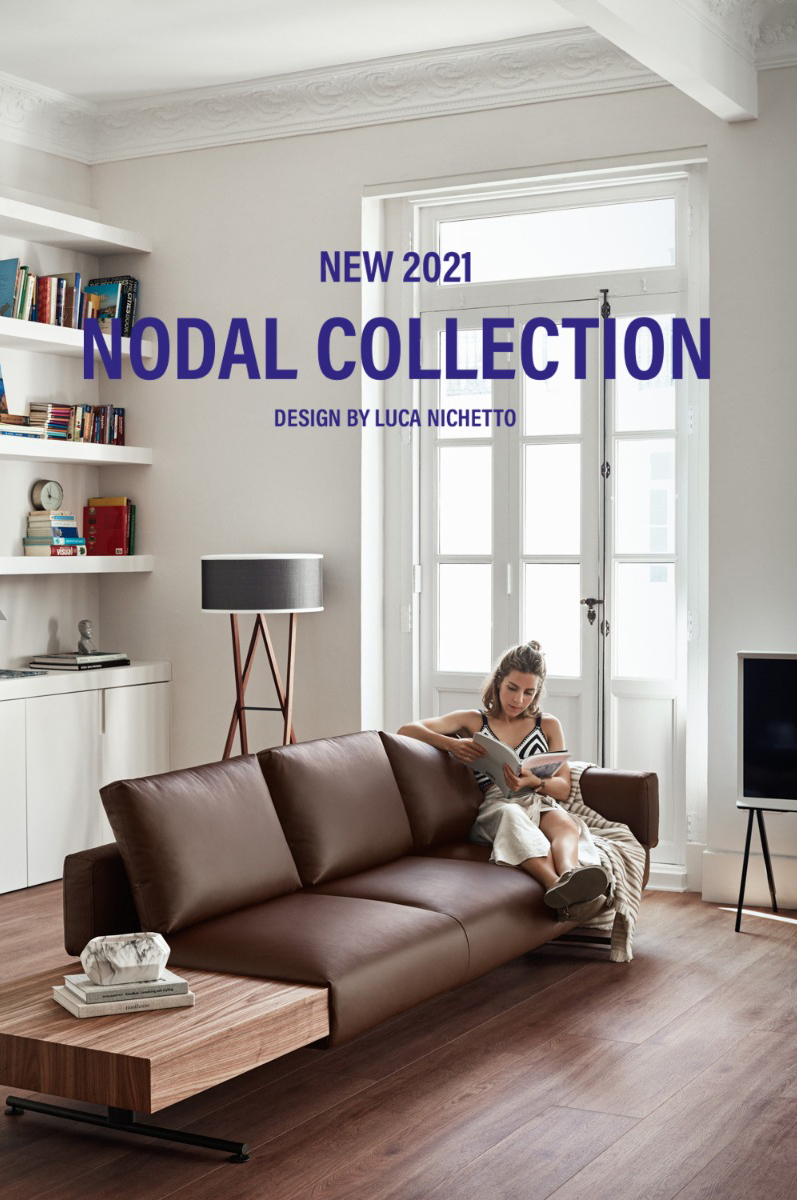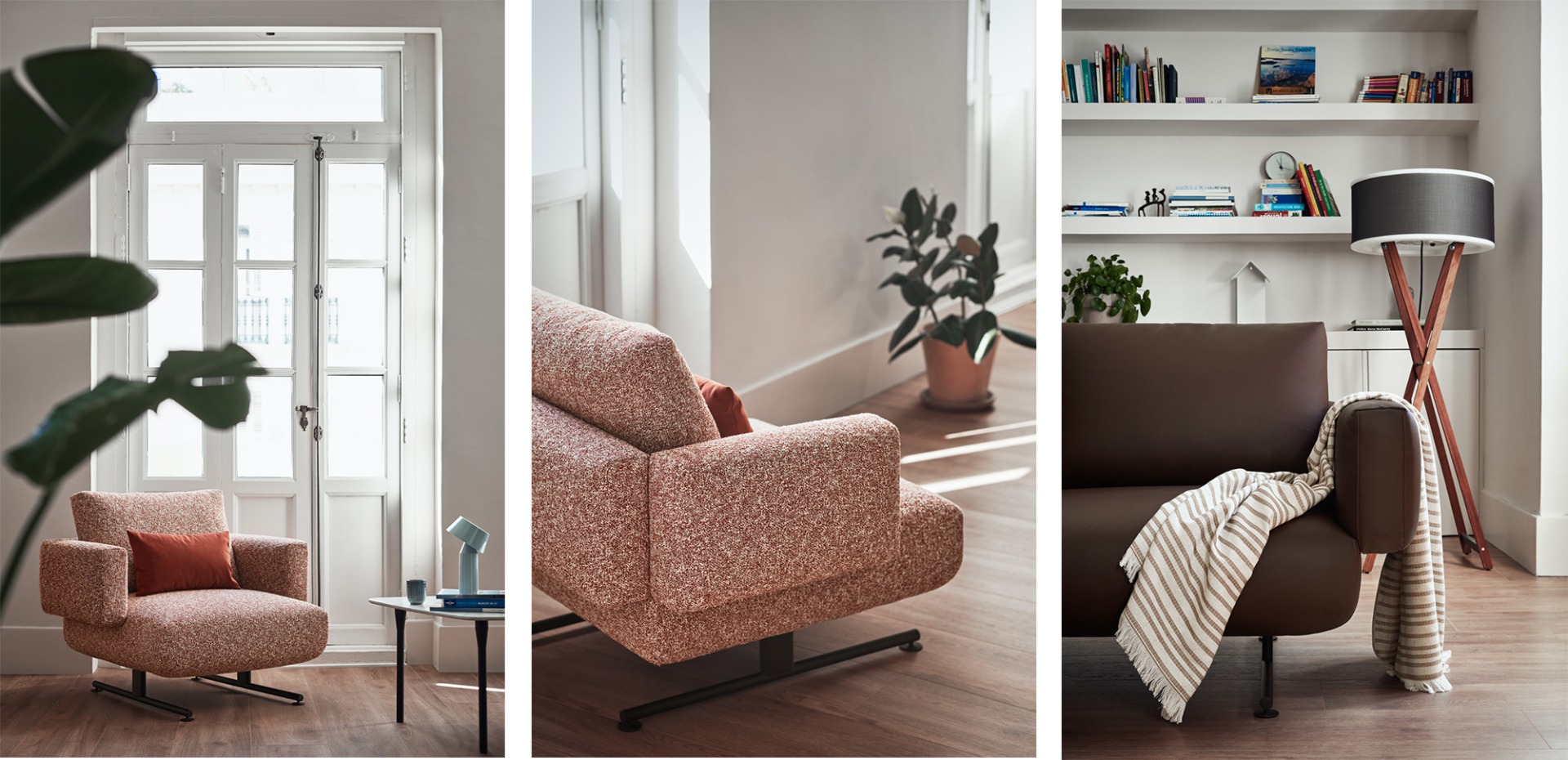This is your first collaboration with Capdell, what excites you the most about this collaboration?
I design for many brands in different fields, especially for the contract market, which is one of the main markets for Capdell. It is interesting to diversify the portfolio as a designer. You can always learn from different cultures in that sense, the different kinds of approaches and needs that different markets have. We live in a global world but the roots and the DNA of the brand make a mark and they are the things that make the brand special in the market.
We are launching your Nodal collection, what are your thoughts on this collection?
The collection was born with a clear idea of being able to make a sofa system that can offer the opportunity to customize and give architects and interior designers the possibility to really make almost any kind of set-up. They can play very easily with the backrest, the armrest and the seat. There is a little twist on these three elements, we design them to create a balance between the seat and the armrest and backrest moving them to the edge of the sofa. By doing this, it is almost like playing with lego. To support this balance we created a very clean and simple but at the same time eye-catching structure with a central beam and the feet welded on a pillar, it is a kind of an upside-down T. It is a very simple idea that offers Capdell to have a collection that can be a modular system but also a free-standing piece accommodating both requirements, contract and residential, depending on how you dress the sofas in terms of textile and how you create the composition.
You’ve spoken in previous interviews about a desire to educate people towards a more sustainable consumer culture. What does it mean and has that desire influenced Nodal in any way?
When I started working at the beginning of 2007 in Sweden I was working for a company that killed a project because the carbon footprint of my project was too high for their standards. At that time I had no idea what carbon footprint meant. So working and living in Scandinavia educated me to consider important the life cycle of a product and to understand the purpose and quality of what we are doing, granting to the people at least certain longevity that makes the product somehow sustainable.
I grew up in a middle-class family in Italy with my mum working as a glass decorator and my father working in a bank, and our flat had a Coronado sofa, a table from Techno, the design was around me because my parents loved those pieces and they were saving money to achieve the opportunity to buy something special. The Coronado sofa is still in the living room, 45 years later, it’s older than me. And it’s perfect, well not perfect, it’s with the patina all the time but it’s even nicer in my opinion. It’s our mission and the company’s mission to educate people to understand the value of things because otherwise artisans and craftsmen will disappear and without them won’t be able to design anymore.

Do you think Nodals’ modularity contributes to its sustainability?
I believe not only in the sustainability of the product but also in the sustainability of the idea. The Nodal collection was designed like that. If you have a sofa that looks the same as Nodal but needs to have a special piece to add to the table, that doesn’t work anymore with sustainability because you have to produce and stock so many things. In the Nodal collection, you have a structure, then the modules and you play like lego. This is another story and it’s the one we want to achieve. The key is to have the fewest elements possible to do all the combinations. In Italian, we say “minimum comun denominatore”. This is the secret of a good project and the Nodal.
With studios based in Venice and Stockholm, where do you prefer to work from?
It really doesn’t matter, both studios are mine and they are different but still the same kind of mess in a way. Italy is special because of the richness in manufacturing, it’s like El Dorado. You don’t need to have a workshop in your studio because it’s easier taking the car and in 5 minutes you have a supplier where you can experiment with your ideas and have direct feedback. However, in terms of digitalization, service or branding and how you communicate things visually, Sweden is more evolved. It’s cool to be in two places because you take advantage of the best of both.



